Crassula (KRASS-you-luh) is a vast genus of succulents that includes well over 1,000 species and cultivars. From petite ground covers up to enormous, tree-like shrubs more than 10 feet tall, crassula grow in many forms. When planning a mixed succulent arrangement, you typically want to use a special variety with star power as the focus of the planting, or “thriller”. Then add other varieties in the roles of “fillers” and “spillers” – those that trail over the edge of the container. Although generally considered a filler succulent, there are crassula varieties that will trail beautifully, and many that will truly thrill! Let’s take a closer look at the crassula plant.
All About Growing Crassula
In this Post We'll Cover:
{Please note, some links in this post may be affiliate links to sites that pay me a small commission if you click on the link and make a purchase. This commission is at absolutely no cost to you. I only recommend products and companies that I have worked with and truly love! ~Kat}
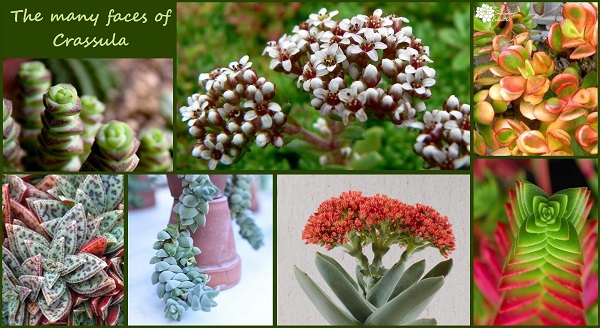
Though crassula developed in many parts of the world, most varieties that have been cultivated originated in South Africa. As you can see, crassula plants develop many wildly varied forms. Let’s take a closer look at what all crassula varieties have in common, then we’ll look at the differences.
Crassula and CAM PhotosynthesisPhotosynthesis (FO-to-SIN-thuh-sis) is the process plants us... More
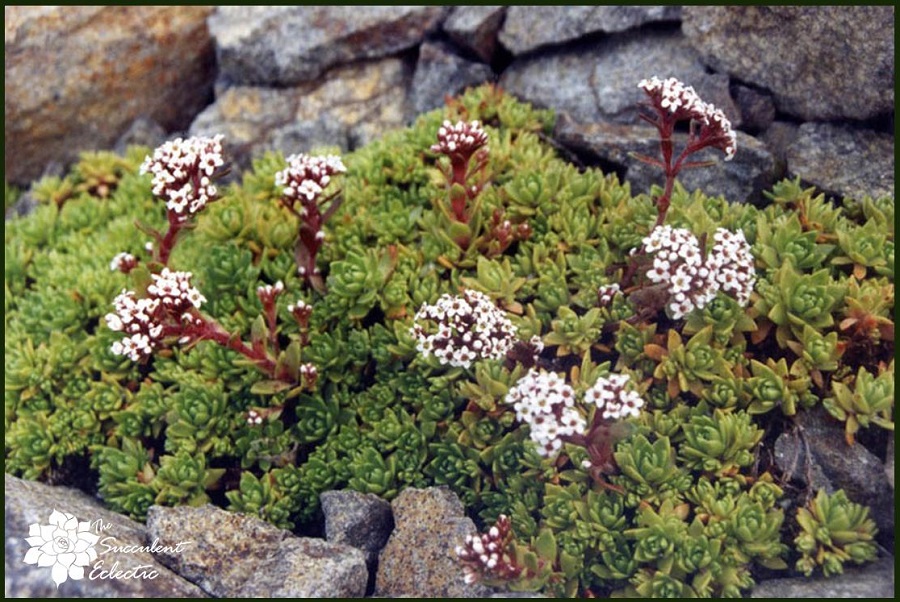
Crassula have developed some strategies to allow them to thrive in adverse conditions. Like all succulents, crassula store water in the plant – in this case, in the leaves. This is an adaptation that enables the plant to survive in very dry conditions.
Unlike all succulents, however, crassula have developed another strategy – Crassulacean Acid Metabolism, or CAM photosynthesis. All plants turn sunlight into energies they can use, like sugars. The process is called photosynthesis. And all plants take in carbon dioxide (CO2) and release oxygen back into the air, which is called respirationRespiration is the process where living beings, both animals... More. When plants respireTo respire - Respiration is the process where living beings,... More (take in CO2 from the air and release oxygen), they also lose a bit of water in the process. Most plants respire all day and all night, while photosynthesis can only happen when the sun is shining. What is different with CAM is that the plant completely shuts down respiration during the day, and only respires at night. This enables the plant to conserve its store of water while taking in the sunlight.
Some other succulents, like sedum and kalanchoe, employ this clever adaptation, but it was first documented with crassula.
Crassula Blooms
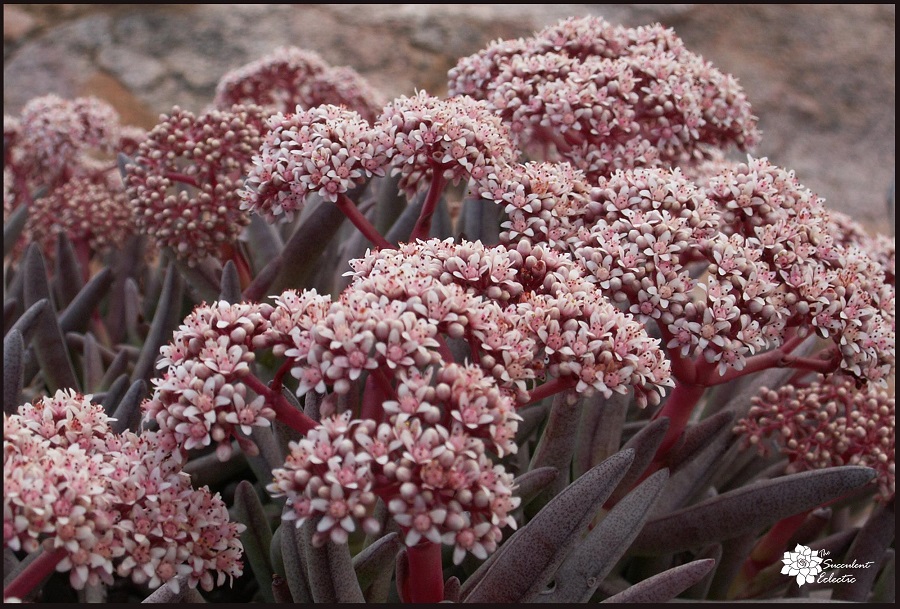
Many varieties of crassula produce showy, long-lasting blooms that are highly attractive to honeybees and butterflies as well as gardeners! Typically, crassula bloom in response to changing day length and temperature changes, conditions not typically found indoors. There are ways to coax a crassula houseplant, like the jade, or money tree, to bloom indoors. But naturally, most crassula with showy flowers produce them from March through September. The flowers are followed by seeds, spread by the breeze to encourage more baby crassula to grow.
Color Changing Crassula
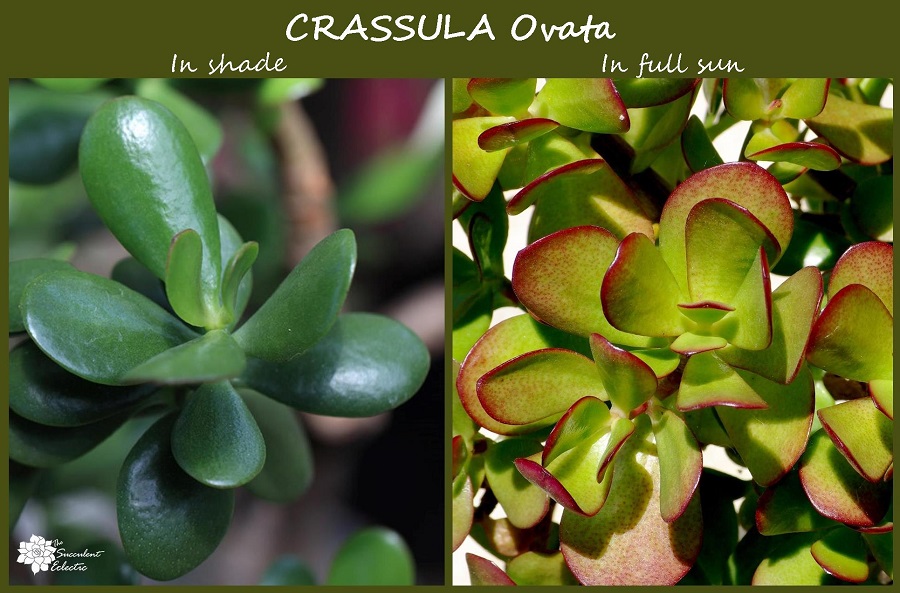
Many varieties of crassula change colors in vivid fashion when given a great deal of direct sunshine. In some circumstances, the color change is related to hormonal changes, preparatory to blooming. In others, color changing succulents are a sign of stress. But in all cases, it is eye-catching and lovely! Both of these plants above are Crassula ovata – also known as the jade plant, money plant, lucky plant, etc. Both are perfectly healthy. There is no need to wonder what is “wrong” with either – they are both doing great! The one on the left is grown in quite a bit of shade, and its coloring is a rich, jade green. On the right, the jade is growing in full sun, flashing chartreuse leaves with scarlet margins. The vivid coloring displayed by some varieties drives hybridization efforts looking for boldly colored crassula under all conditions.
Stacked Crassula
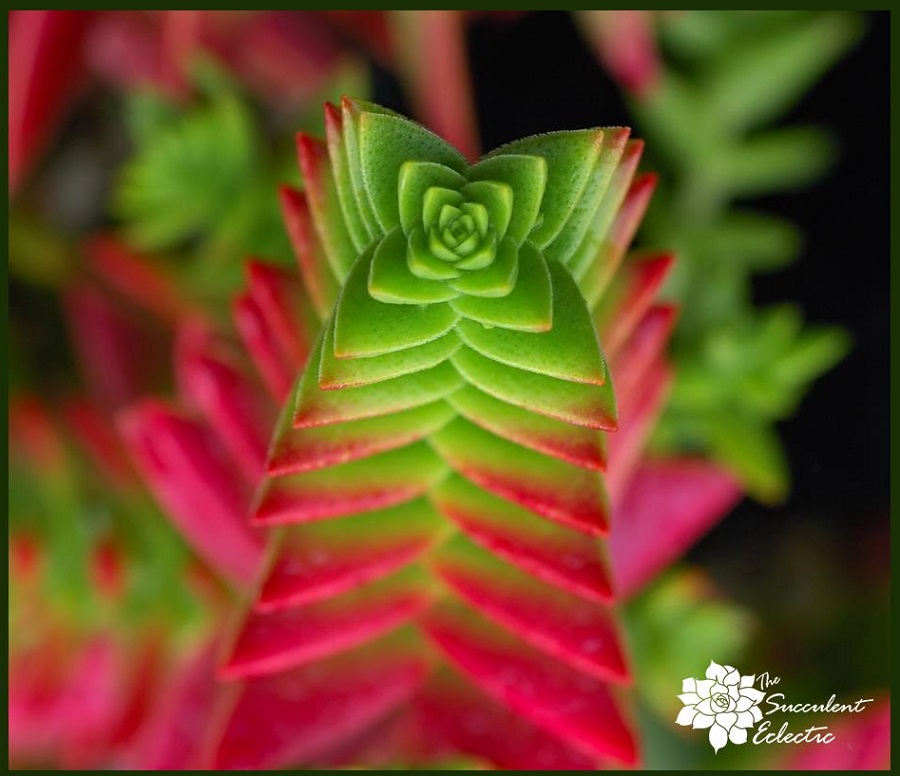
This flashy variety is Crassula capitella, called “Red Pagoda”. In addition to displaying brilliant coloring, this is a great example of a “stacked crassula”. These varieties produce a series of leaves with each set of leaves seemingly stacked upon the set below them. This gives a dizzyingly geometric appeal to these fun plants. Varieties of stacked crassula may have round leaves, or square or triangular. When stacked, the whimsical shapes may form spirals or pendants, climbing vertically or trailing. These beauties have common names that evoke their shapes, like baby’s necklace, string of buttons, Chinese pagoda, shark’s tooth, worm plant, propeller plant, Indian paintbrush and many more.
Long on charm, there seems to be no reason for these shapes beyond flaunting their sheer fanciful flair.
Crassula Care
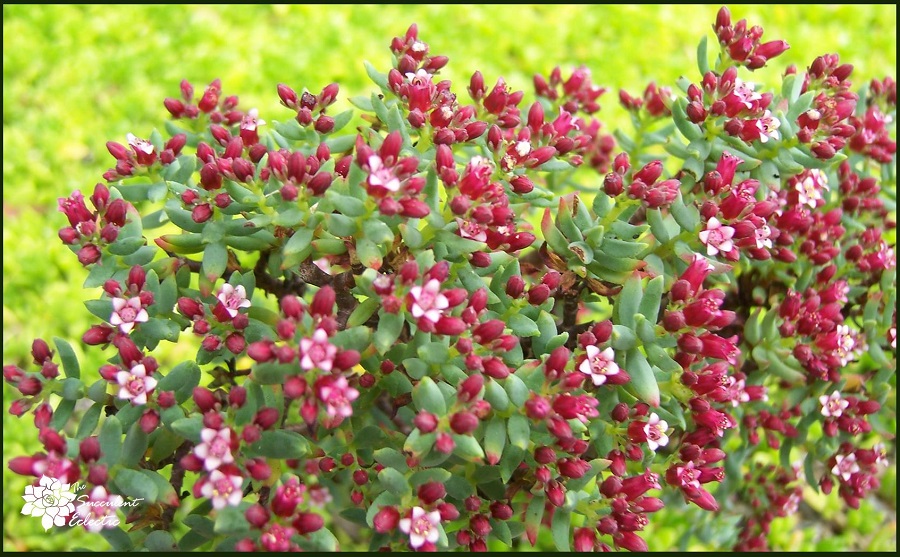
Crassula are typically hardy to USDA zones 9-11. Protect the plants from frost. You can over-winter your plants indoors. All varieties grow well in containers. Most crassula like a lot of light, though some, like the popular jade plant, can be happy with average indoor lighting, and make terrific houseplants year round. Take care to allow for good air circulation around your crassula plants, both indoors and out.
Like most succulents, crassula need a gritty soil mix that drains fast. I use a succulent mix that is formulated for palms and cactus. You might like to make your own, and there are many recipes you can find online. It is critical to only water when the soil is dry. These plants are beautifully adapted to growing in dry conditions. They will die if the soil is too wet for too long. Read more in-depth information about how to water your succulents.
Crassula Propagation
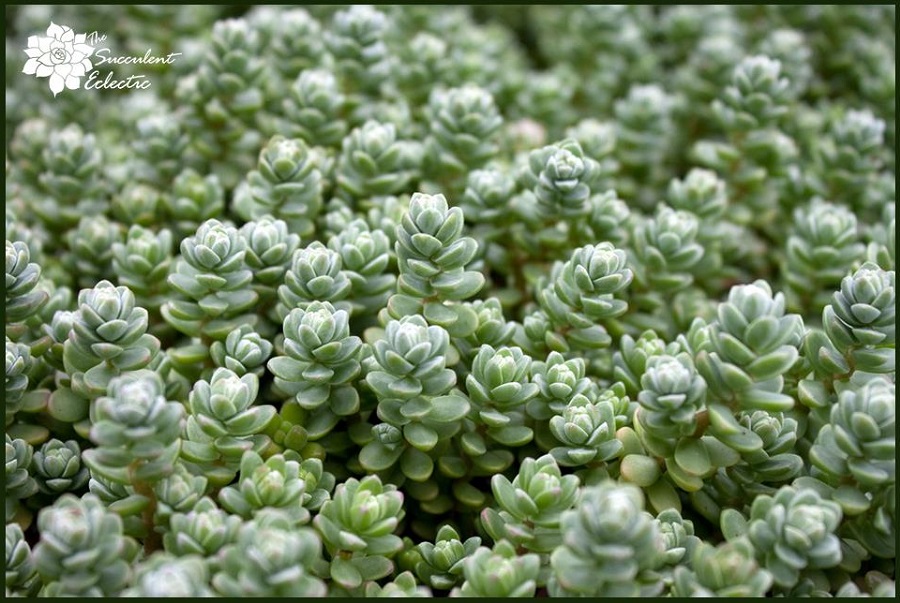
Crassula stems tend to be a bit brittle, easily breaking off. This does have an important purpose. This enables the plant to deal with damage caused by wind, foot traffic and foraging animals by creating an opportunity to reproduce. When leaves fall or a stem breaks, it drops to the soil near the mother plant, and begins to take root. You can easily propagate your crassula plant by leaf or stem cutting. While most succulents root well, crassula is among the very easiest to reproduce. I’ll cover two methods of propagation, by stem cuttings and by leaves.
Rooting Crassula Cuttings

Crassula propagate easily by stem cuttings. Simply cut a piece of stem about 2-4 inches long, leaving at least 2 sets of leaves in place to start your new plant. Remove the leaves from the bottom .5 inch to 2 inches of the stem. You will put this part into your growing medium when you are ready. Leave the cutting exposed to the air in a sheltered spot, out of direct sun for 2-3 days. This allows the cut to heal over, and form a callous. Then “plant” your cutting in dry medium. I like to use the same soil I grow my succulents in, but you can use straight sand, or pumice if you prefer. Leave the stems in the dry growing medium for a couple of weeks.
Until your cutting has developed new roots, it will be unable to make use of any water you apply. Excess water can lead to rot, so leave it dry. After a couple of weeks, mist the soil well with water, and then give it another couple of weeks. In 4-6 weeks, you will have roots forming. Gently lift up on the stem. If it resists – it has rooted, and your new plant is beginning! Transplant to succulent mix now, or leave in place if you started with succulent soil. Water the soil when it is fully dry and allow to drain.
Rooting Crassula Leaves
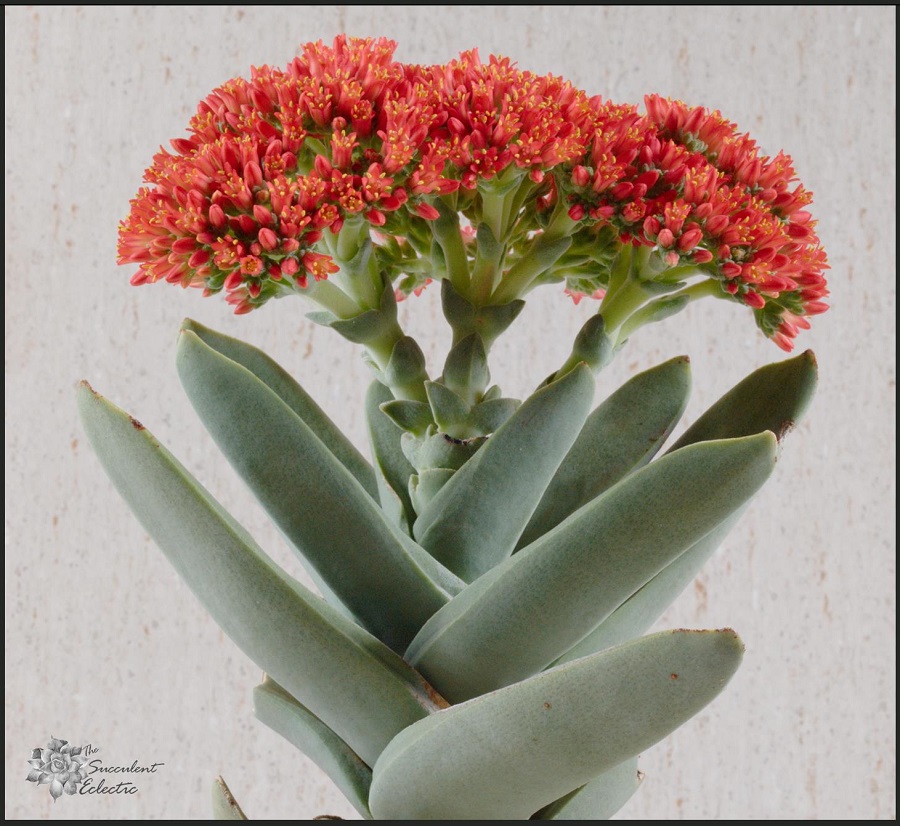
If you want to root just the leaves, be sure to get the whole leaf. You will need the part of the leaf that attaches to the stem in order to get it to root. Then, simply set the leaves on a pot of succulent soil, out of direct sunlight. Until your leaf develops roots, it will be unable to make use of any water, so leave the soil dry. After 4-6 weeks, you will see new little roots developing, and possibly some tiny, new leaves. Gently top it with a bit of soil, and water lightly.
Congratulations! You have made new baby crassula plants! 🙂
Shopping for Crassula

If you would like to purchase crassula online, Mountain Crest Gardens currently has 36 varieties available. If you are in a colder region and shopping during winter months, I encourage you to include a heat pack in your order – it will emit heat for 72 hours to help to protect your succulents from the cold in transit.
There you have it – an overview of the fascinating succulent crassula. Are you growing crassula now, or will you be trying it soon? I would love to know! Please take a moment to leave a comment, and let me know. If you have any questions, I am here to help!
Happy gardening!

P.S. Please subscribe to The Succulent Eclectic today! If you already have – thank you so much! ?
P.P.S. Why not join my Facebook Group for succulent lovers? We talk about succulent care, propagation, succulent identification, and design. It’s a warm and welcoming group that would love to meet you!

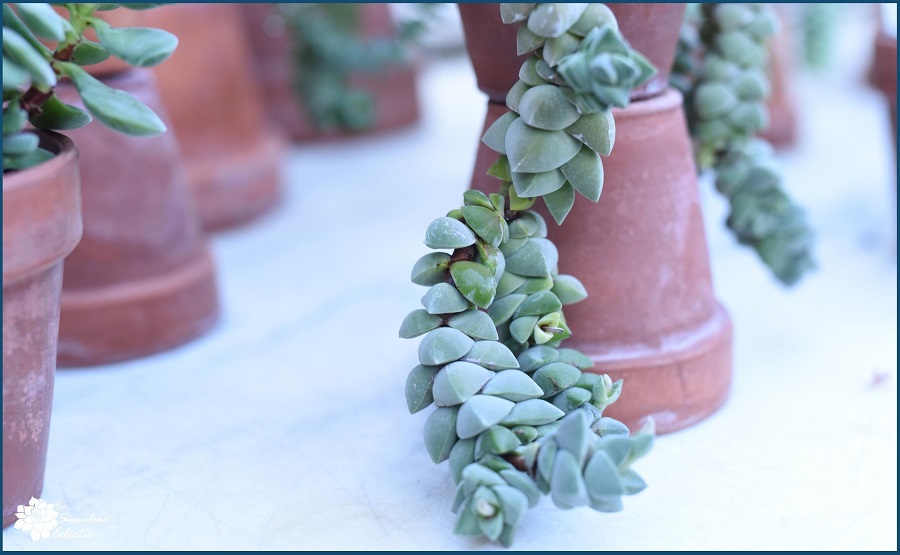
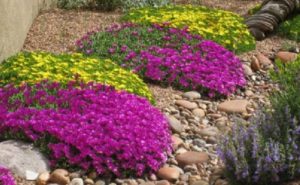
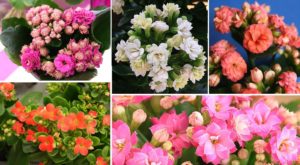
![Read more about the article 7 Simple Succulent Care Tips for Beginners [Infographic]](https://thesucculenteclectic.com/wp-content/uploads/2020/09/7-TIPS-FOR-succulent-beginnersjpg-300x169.jpg)